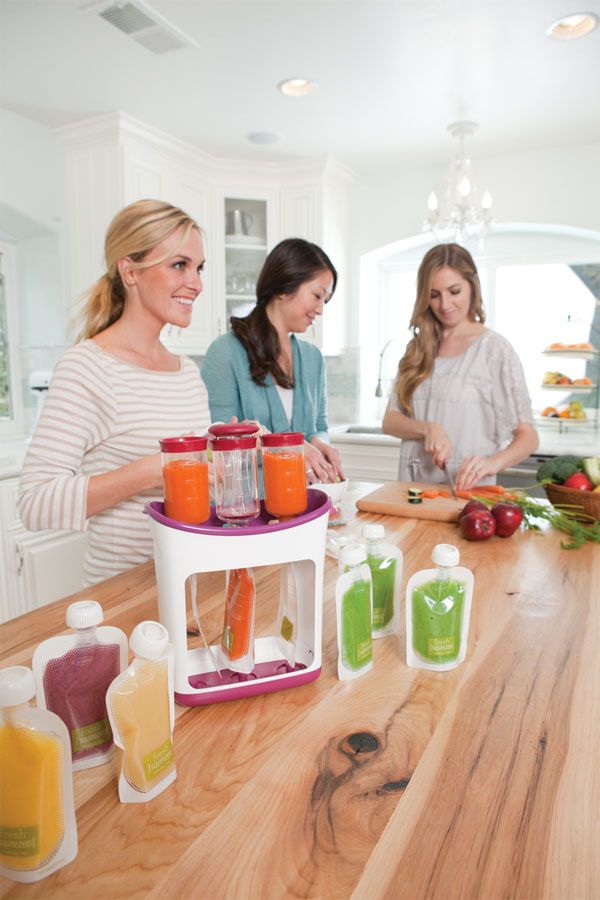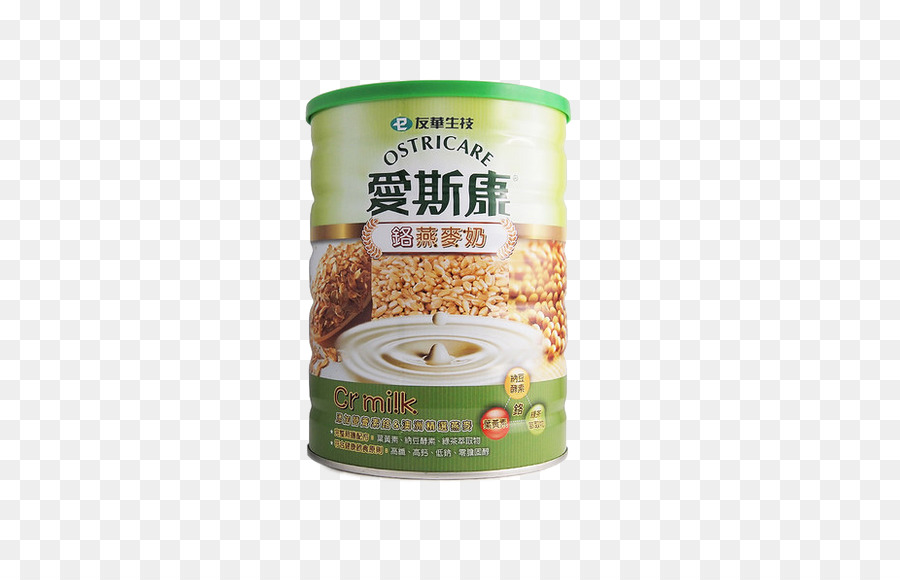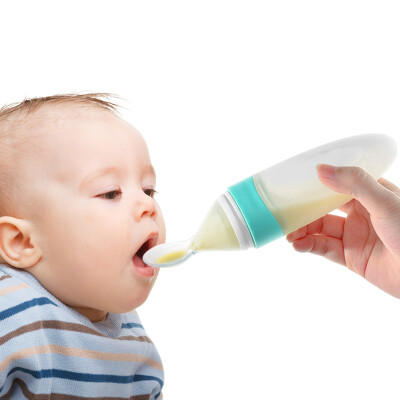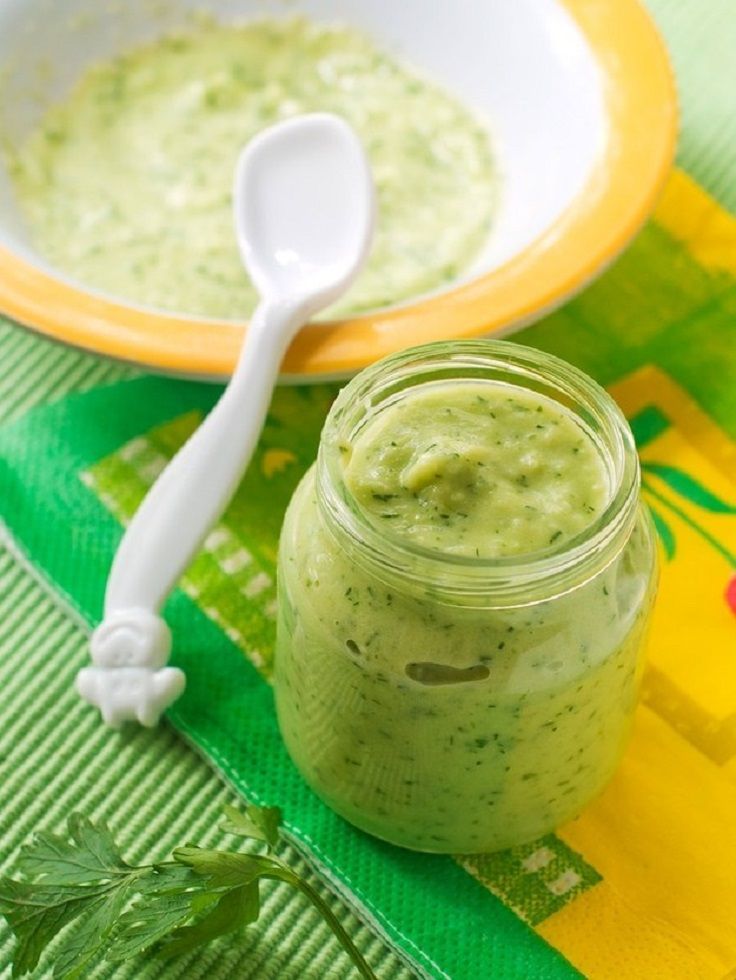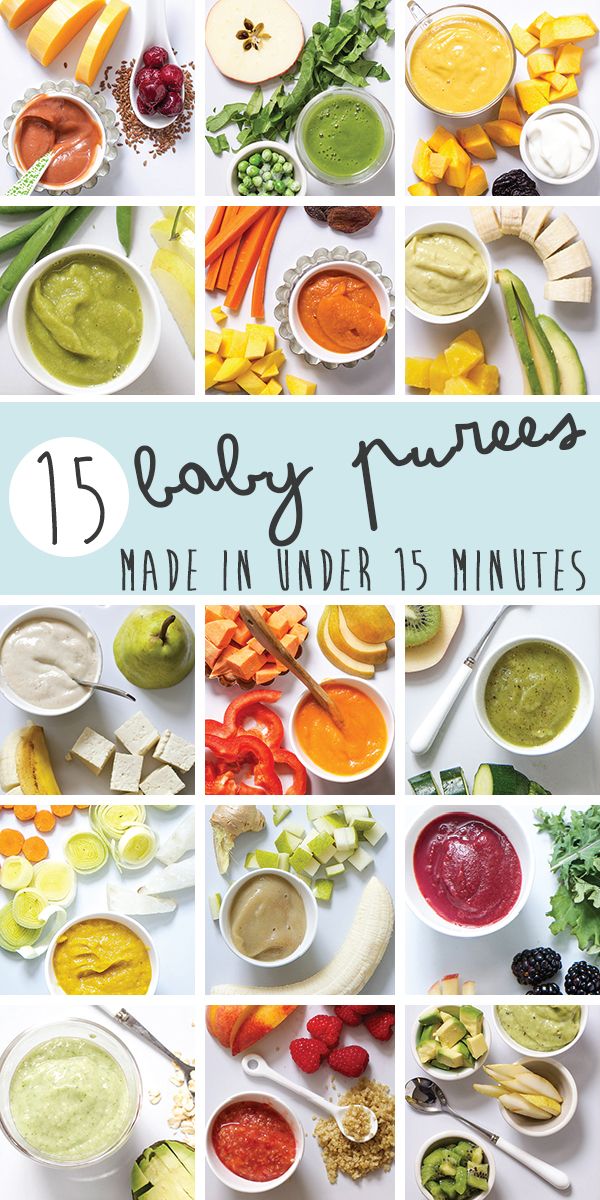Freshly squeezed baby food
Fresh Squeezed Infantino Feeding System
This is it, Mom’s. One of the coolest, most useful little gadgets (is it really a gadget?) I have come across in my almost 3 years as a parent. The Fresh Squeezed feeding system from Infantino.
Our second daughter, Grace, born premature with congenital CMV, has developmental delays and extreme problems gaining weight and holding calories. The ONLY way she will consume solids is through the now popular squeeze pack pouches. This is awesome because these pouches are super convenient, easy for her to suck nutrients out of, and packed full of interesting and unique produce flavors. They are not awesome, however, because they are pretty expensive (up to $1.68 per pouch!) and just aren’t homemade. I really got into making homemade baby food this time around and was bummed when Gracie started to reject anything from a spoon. There were bags and bags of frozen baby food in our fridge that I thought might go to waste.
Enter the Fresh Squeezed line!
Image courtesy of Infantino.
That’s a lot of stuff in that photo, huh? I only felt it necessary to buy the actual squeeze station thing, the little squeeze pack baggies (obviously) and the squeeze pack tray for the fridge or freezer. I used regular kitchen equipment for everything else and my handy dandy immersion blender to do all of the heavy mixing. If you don’t cook often, or don’t think you have all the equipment necessary, I’d definitely splurge and get the whole system. I was really pleased with the quality of all of the parts. Everything seems like it will hold up nicely.
The magic is in these little funnel attachments that screw onto the squeeze pack baggies. A rubber tipped plunger pushes the pureed food through the opening and down into the pouch.
I thought I was about to make a huge mess, starting this little squeeze pack experiment, but the kitchen stayed almost completely clean and there was barely any clean up- just a quick run through soapy water and everything rinsed clean. No scrubbing or scraping or brushing of any parts, no dishwasher necessary.
No scrubbing or scraping or brushing of any parts, no dishwasher necessary.
These are the 4 flavors I made this evening:
1. Sweet Potato, Apple, Cinnamon
- prick and then roast 4-5 sweet potatoes in a 400 degree oven until very soft
- remove skin and set aside in a bowl
- core and dice two apples (skin on) and add to the sweet potatoes
- sprinkle with a teaspoon of cinnamon
- use immersion blender to puree mixture to a smooth consistency
2. Basil, Apple, Sweet Pea
- microwave 3 cups of frozen peas until they are thawed and tender but still bright green (about 4 minutes)
- core and dice two apples (skin on) and add to the bowl of thawed peas
- add a handful of washed, fresh basil leaves to the apple and peas
- use immersion blender to puree mixture to a smooth consistency
3. Carrot, Squash, Banana, Avocado
- Cut butternut squash in half and remove stringy pulp and seeds
- peel and dice 4 large carrots
- add squash and carrot to large baking sheet and roast in a 450 degree oven until tender (about 45 min)
- peel two bananas into a large mixing bowl
- remove veggies from oven and allow to cool completely
- remove flesh from skin of squash and add it, with carrots, to the bowl of bananas
- use immersion blender to puree mixture to a smooth consistency
- add flesh from two haas avocados
- add a squeeze of fresh lemon juice (to prevent serious browning)
- use immersion blender again to combine
4.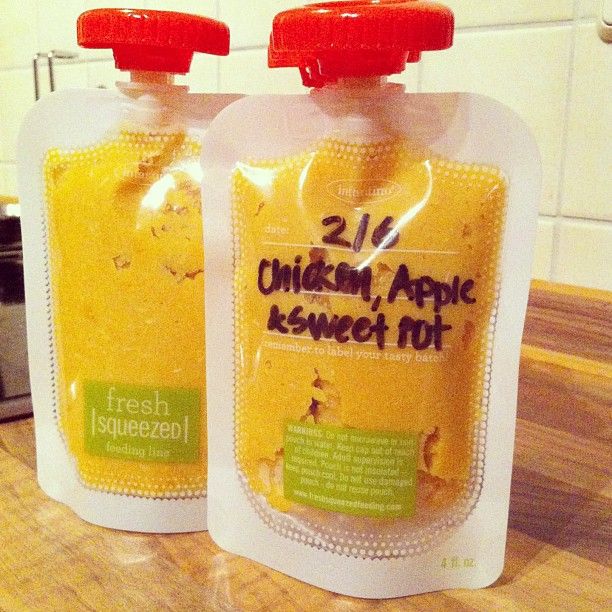 Blueberry, banana, apple
Blueberry, banana, apple
- core and dice two apples (skin on) and add to a bowl
- add two cups of blueberries
- add two bananas
- use immersion blender to puree mixture to a smooth consistency
*It IS important to keep foods to the consistency of a smoothie- i.e. no chunks allowed to this party.
*It ISN’T important to follow “rules” about recipes. Anything goes here- greens with fruit, spices, herbs, whatever you think sounds good, your babe will probably enjoy trying.
*There are no preservatives in this food so it has to either be consumed in 48 hours or frozen. This is no big deal to our family since they are eaten so quickly and we are used to having a freezer stocked with breast milk or homemade baby food at any given point in time.
*This method of baby food making lends itself well to buying in bulk and taking advantage of sales. For example, bananas were $0.25 per POUND today at the store, hence so many appearances from Mr.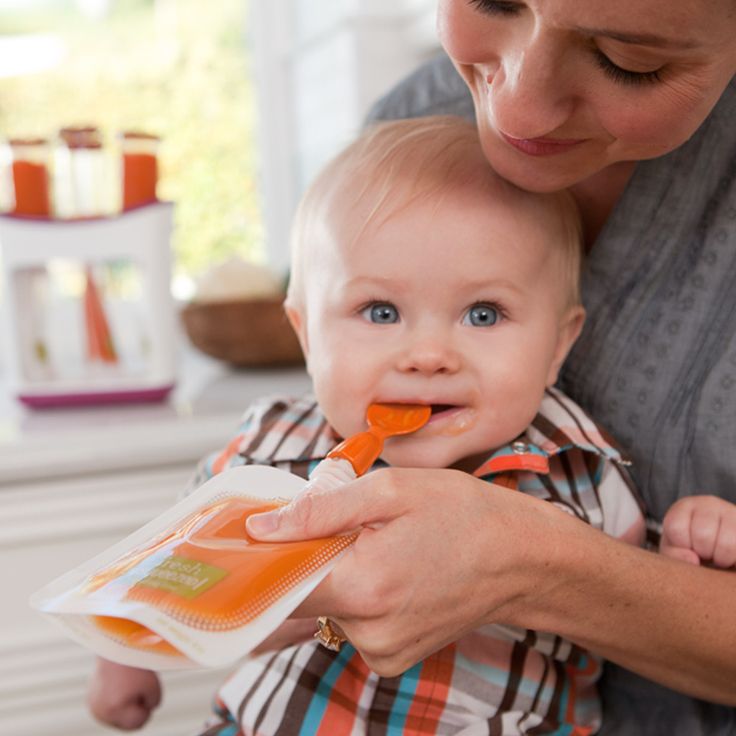 Banana himself. I got like 20 bananas for a dollar.
Banana himself. I got like 20 bananas for a dollar.
*I will be able to add whatever the Feeding Team decides is necessary to help boost Gracie’s calories. Powders, butter, oil, avocado, cream etc. are all easy additions to this type of baby food making process.
*I plan on making actual fruit and yogurt smoothies for my toddler who loves these squeeze packs too. She’ll probably get a kick out of helping make up her own concoctions which should be pretty fun.
The squeeze station is only $25.00. With the amount you could spend on a baby food cooking system these days- I think that is an incredible steal. Add that to the amount you will save on buying the actual pouches and you are certainly looking at a big cost savings if you are a family of squeeze pack lovers.
A box of 50 clear plastic pouches cost $13.59 and the fridge container tray costs $9.99 (this wasn’t truly necessary, but I need all the help I can get with organizing and keeping things tidy- and the fridge is no exception!).
So at just over $50, you have everything you need to make delicious, healthy, on-the-go friendly meals that your little ones will love.
You can get the whole line at Babies R Us. Pretty sure this system, the immersion blender, and my favorite baby food cookbook will be my go to baby shower gift from now on. I can’t get over how great this all is. Here is the link to buy:
Infantino Fresh Squeezed System
Thanks Infantino, I have a new hobby now 🙂
Infantino Fresh Squeezed Feeding Line Party and Review
Update: There is now a simplified version of this baby pouch maker available on Amazon!! Infantino fresh squeezed simple squeeze kit. Whether you’re squeezing your own homemade creations or storing bulk sacks as single servings, the simple squeeze kit offers everything you need in one easy-touse kit. Includes a filling tube, press, 10 pouches and caps.
Baby Em’s and I were one of the lucky families picked to review the brand new Infantino Fresh Squeezed Feeding Line.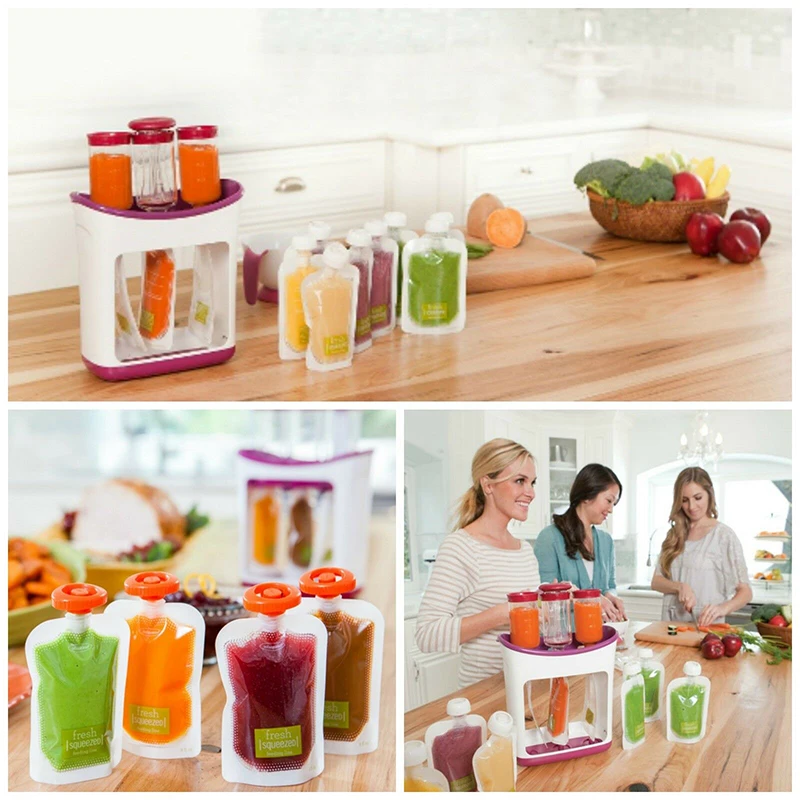 Here is what we received in our box:
Here is what we received in our box:
- Includes 1-squeeze station, 3-tubes, 1-press and 10-squeeze pouches
- Soft rubber press allows for easy grip
- Non-skid base
- Holds up to 4 oz. of your homemade puree
- Dishwasher safe
- BPA, PVC & phthalate free
- Includes 1 Reusable Squeeze Pouch and 1 travel clip that can attach to bag or stroller
- Dishwasher safe
- BPA, PVC & phthalate free
- Includes 50 Squeeze Pouches
- Child safe cap
- Front panel for labeling
- Food and freezer safe
- BPA, PVC & phthalate free
- Includes 2 spoons, 1 case and travel clip
- Dishwasher safe
- BPA, PVC & phthalate free
- Includes 1-smush masher, 1-vented lid, 1-steam basket and 1-smush bowl
- Soft, easy-to-grip rubber handle stays cool
- Microwave safe
- Dishwasher safe
- BPA, PVC & phthalate free
- Non-skid base
- Stainless steel blade
- Holds up to 1.
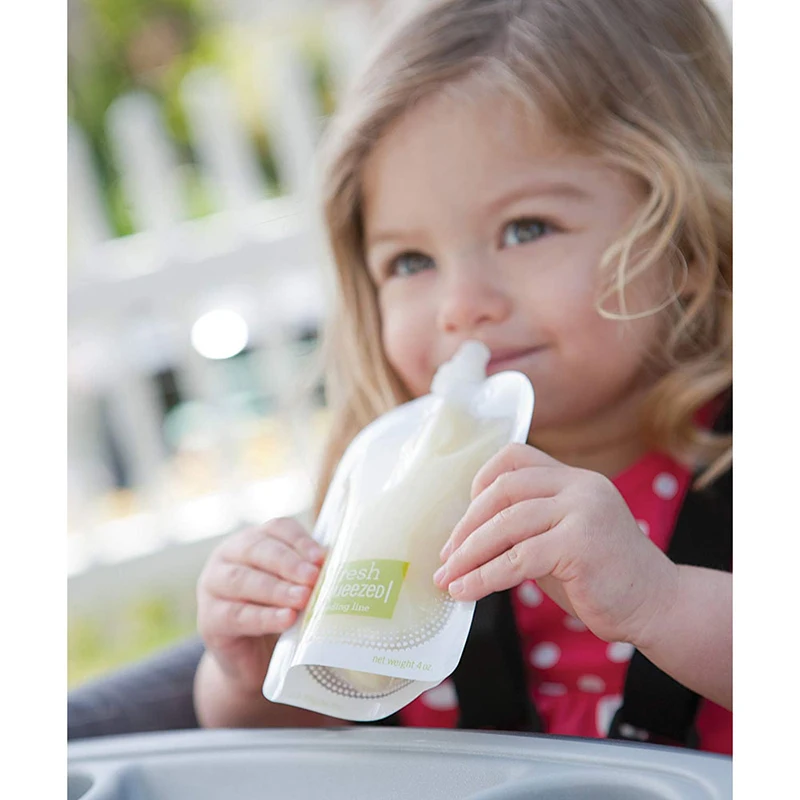 5 cups of food at a time
5 cups of food at a time - Disassembles for easy washing and storage
- BPA, PVC & phthalate free
We called a bunch of our friends to come over. A few weren’t able to make it but promised they will make it up to us and they can’t wait to get a taste! We went to the market to buy what we would need to get this party started. We bought strawberries, blueberries, bananas, pears and carrots.
The moms got to work prepping the fruits by washing and cutting. First we tried strawberries and blueberries and added some water. It took a few tries to figure out how to properly lock the container into the Peppy Puree to get it working. Once I got it latched we blended away!
I think I will have to continue to play with the consistencies and how much water and/or juice to add as I found that the blueberries had a hard time getting broken down (there was a lot of chunks of skin). Otherwise the blender did a great job of pureeing the fruit.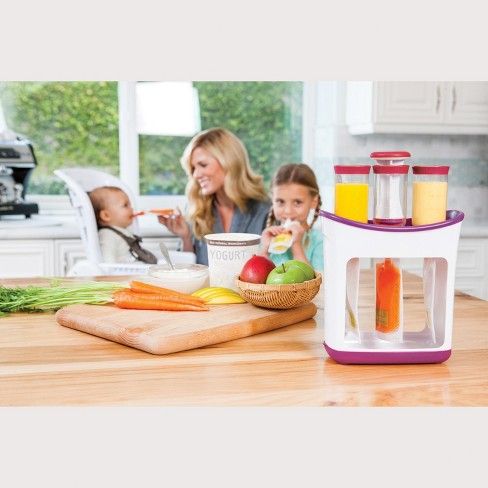 The only negative I found was that as the fruit spun around and became pureed I noticed some escaping from in between the bowl and lid. Some fruit got into the crevice of the locking mechanism of the actual machine and I am not quite sure how to clean it out properly since the machine cannot be immersed in water.
The only negative I found was that as the fruit spun around and became pureed I noticed some escaping from in between the bowl and lid. Some fruit got into the crevice of the locking mechanism of the actual machine and I am not quite sure how to clean it out properly since the machine cannot be immersed in water.
We set up the squeeze station and I pulled out the instruction because I thought I could just clip the squeeze pouch in and screw on the tubes but that was not the case. The top of the squeeze station needs to be remove, the pouches slipped in properly onto the track, then the top needs to be popped back into the station. I poured the fruit into the tubes, which got a bit messy because the bowl of the Peppy Puree does not have a spout. I used the press to push the fruit down into the pouches. It did a very good job of getting the fruit into the bag, except on occasion when a piece of the blueberry skin got caught in the way and a little extra pressure had to be applied. The fit between the press and the tube was so great that if you tried to pull the press back out before removing the tube some fruit was “vacuumed” back up into the tube. All the tubes had to be removed in order to remove the top of the station and get the pouches out and/or place new ones. This was a bit of a daunting task. It wold be great if they could design it in such a way as to make the pouches easily come in and out without having to actually disassemble the squeeze station.
The fit between the press and the tube was so great that if you tried to pull the press back out before removing the tube some fruit was “vacuumed” back up into the tube. All the tubes had to be removed in order to remove the top of the station and get the pouches out and/or place new ones. This was a bit of a daunting task. It wold be great if they could design it in such a way as to make the pouches easily come in and out without having to actually disassemble the squeeze station.
The Steam and Smush is a great alternative to having to pull out pots and boil water in order to soften and cook certain fruits and veggies. It was quick and easy to use and got the job done. It worked great with carrots.
The reusable squeeze pouch is fantastic. It comes with a travel clip which makes me feel secure knowing that I won’t lose it. I’m know to lose things, so I clip everything to the stroller, including the baby (no, I don’t lose the baby, I keep her clipped in!).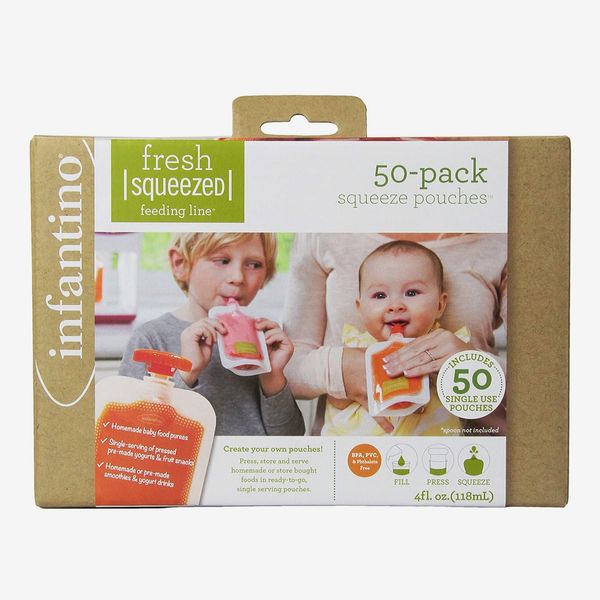 The spoons was a fantastic accessory to have as Baby Em’s is teething and she loves to grip onto her spoons as she’s eating. They are soft enough to be gentle enough for her to do so. The carrying case with its travel clip is again a perfect on the go necessity. The spoons will always be clean and never lost.
The spoons was a fantastic accessory to have as Baby Em’s is teething and she loves to grip onto her spoons as she’s eating. They are soft enough to be gentle enough for her to do so. The carrying case with its travel clip is again a perfect on the go necessity. The spoons will always be clean and never lost.
The tubes of the Squeeze Station store within the station itself by being screwed into the bottom plate. All the parts and accessories are dishwasher safe, except for the Peppy Puree, but it comes apart easily for a quick cleaning in the sink (the blade is sharp so be careful when handling).
The children had a great time trying out and guessing the different flavor combinations we put together (sneaking in some veggies while they weren’t looking). Baby Em’s won the contest with the fewest (none actually because she doesn’t talk yet) incorrect guesses, lol.
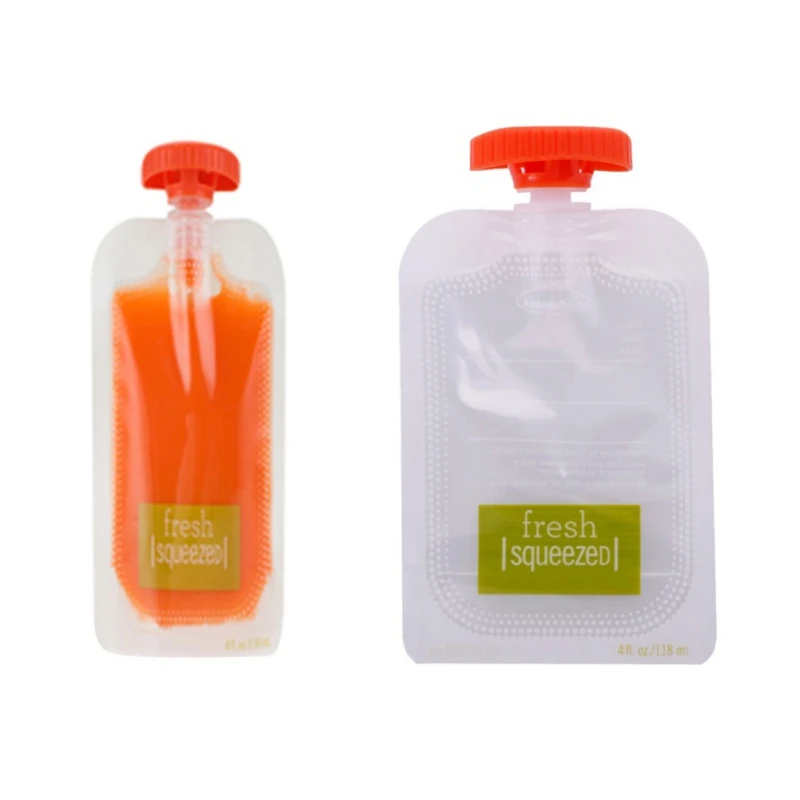 Blend, press, enjoy…Blueberry skin not quite breaking down.You can fill 3 pouches at a time. Creating different mixtures with each one. The pouches rest on a track and the tubes are screwed into them. Once complete, you must unscrew the tubes, lift up the purple top and then slide each pouch off and replace with a new bag. Different mixes using Bananas, Blueberries and Strawberries (and some hidden veggies…shh don’t tell the children!) The reserve side has lines so you can date and label the pouches.A Mother’s Seal of Approval – Aunt VanessaAunt Carol testing out the final product…and Baby Em’s trying to get her food back!Mine, it’s all mine – so easy a 5 month old can feed herself!Must the mamarazzi always be taking pictures? We’re eating, leave us in squeeze pouch heaven!Spoon and Teether all in one! Lunch time carrots made quick and easy.
Blend, press, enjoy…Blueberry skin not quite breaking down.You can fill 3 pouches at a time. Creating different mixtures with each one. The pouches rest on a track and the tubes are screwed into them. Once complete, you must unscrew the tubes, lift up the purple top and then slide each pouch off and replace with a new bag. Different mixes using Bananas, Blueberries and Strawberries (and some hidden veggies…shh don’t tell the children!) The reserve side has lines so you can date and label the pouches.A Mother’s Seal of Approval – Aunt VanessaAunt Carol testing out the final product…and Baby Em’s trying to get her food back!Mine, it’s all mine – so easy a 5 month old can feed herself!Must the mamarazzi always be taking pictures? We’re eating, leave us in squeeze pouch heaven!Spoon and Teether all in one! Lunch time carrots made quick and easy. Yummylicious Carrots – trying to eat like a big girl
Yummylicious Carrots – trying to eat like a big girlAll in all I LOVE the product. With squeeze pouches being all the rage these days and costing anywhere from $1 to $3, not only am I assured of what is being put in my daughters food, but I estimate that the cost of filling each pouch (not counting the initial product investment) is approximately less than 20 cents each (50 cents when you factor in the cost of the disposable pouches – still a fabulous deal).
The Infantino Fresh Squeezed Feeding Line will be available in Babies R Us in September. There will be additional accessories (get a sneak peek here) such as Add On Funnel, Stay Cool Travel Bag, Fridge & Freezer Sleeve (for easy storing), and the Mighty Mill (for on the go blending). I can’t wait to try these additional accessories! The Squeeze Station will be very reasonably priced at $24.99 and $16.99 for the 50pk of Disposable Pouches. I think I will be purchasing additional reusable pouches as it will reduce waste and they will be convenient for around the house.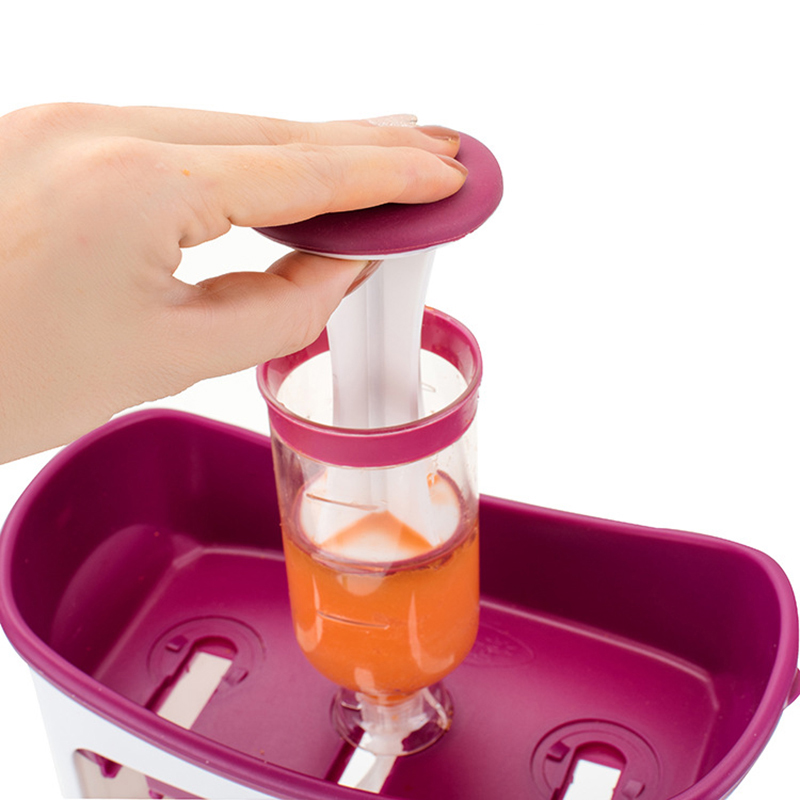 However, I will definitely keep the reusable ones stocked because they will be perfect for long term freezing and when you’re on the go you can just throw them out when you are done.
However, I will definitely keep the reusable ones stocked because they will be perfect for long term freezing and when you’re on the go you can just throw them out when you are done.
Visit the Infantino website to learn more about their new Fresh Squeezed Feeding Line! I’d love to be able to give one of these away so please be sure to leave some comments about my review and the product. Hopefully I will be able to get Infantino to supply one for a giveaway for my readers!
I ♥ It Ratings (out of a possible 5 ♥’s):
Pricing: ♥ ♥ ♥ ♥ ♥
Product Design:
♥ ♥ ♥ ♥Ease of Use: ♥ ♥ ♥ ♥
Product Benefits: ♥ ♥ ♥ ♥ ♥
Child Friendly: ♥ ♥ ♥ ♥
Overall: ♥ ♥ ♥ ♥ 1/2
Welcome to Fresh Squeezed – the new way to create healthy, delicious baby meals at home that go right into convenient squeeze pouches. Make it. Take it. Yum!
Love,MamaDisclosure: I have received the Fresh Squeezed Squeeze Station from Infantino to facilitate my review.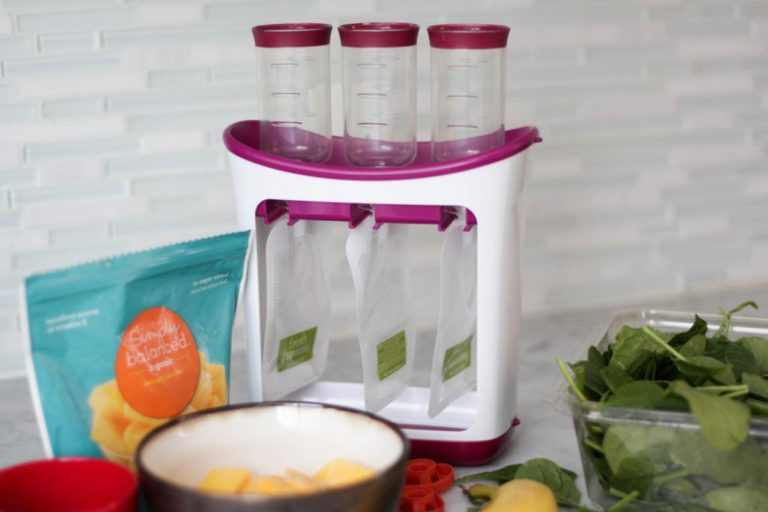 My opinions are always my own and my readers will always be given the whole truth and nothing but the truth.
My opinions are always my own and my readers will always be given the whole truth and nothing but the truth.
Peculiarities of using juices in children's diet
Fruit and vegetable juices are valuable sources of vitamins, minerals, organic acids, fiber, pectins and other important elements for our body. They are well absorbed by the body, so they are suitable for baby food. Today we will talk about what juices and at what age should be given to the baby so that he grows up healthy and active.
Juice, nectar and fruit drink - what's the difference?
On the shelves of stores you can find various fruit and vegetable drinks for baby food: juices, nectars and fruit drinks. They differ in composition and, accordingly, health benefits.
Juices
The basis for such drinks is fruit, vegetable or berry raw materials, which account for at least 85%. Other juice ingredients: water, sugar or acidifier. Juices are available:
Freshly squeezed - such drinks get on the table immediately after preparation.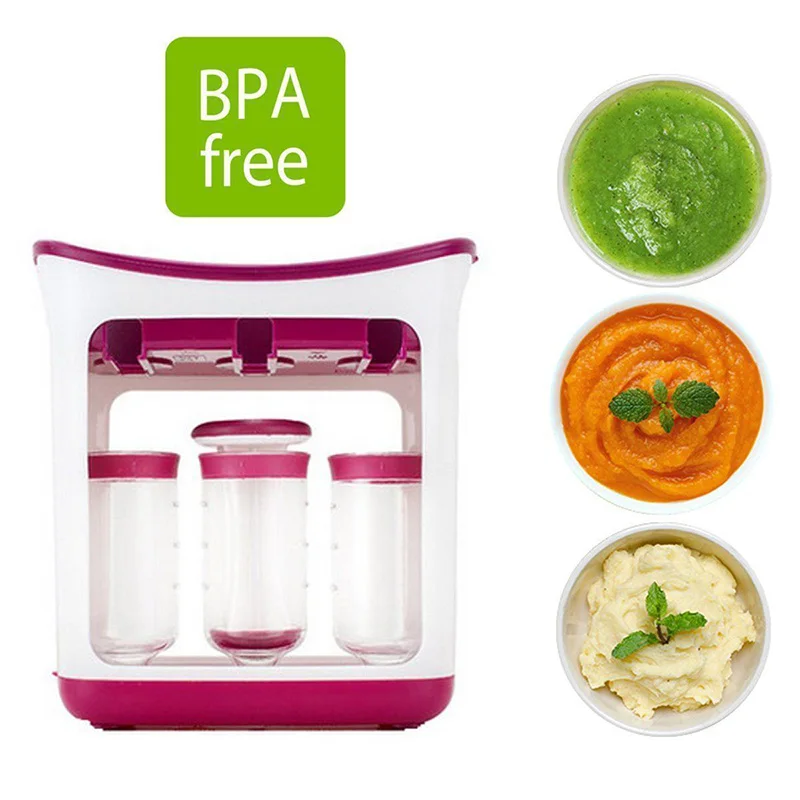 In their manufacture, only natural raw materials are used. They are considered the most useful, because they are the leaders in the content of the most important biologically active substances. It is recommended to consume them immediately, because after a few hours, freshly squeezed juice loses most of the nutrients. Also, freshly squeezed juices aggressively affect the mucous membrane of the digestive tract due to the high content of acids. Therefore, children and people with gastrointestinal diseases should use them with caution.
In their manufacture, only natural raw materials are used. They are considered the most useful, because they are the leaders in the content of the most important biologically active substances. It is recommended to consume them immediately, because after a few hours, freshly squeezed juice loses most of the nutrients. Also, freshly squeezed juices aggressively affect the mucous membrane of the digestive tract due to the high content of acids. Therefore, children and people with gastrointestinal diseases should use them with caution.
Straight juices - prepared in the same way as fresh juices, but then pasteurized to keep them longer. In industrial production, sugar, water, preservatives and dyes can be added to them. Less aggressive towards the mucous membrane, but at the same time contain many useful substances.
Reconstituted juices - prepared from fruit, berry or vegetable concentrate, which is diluted with water. Also, drinks are sometimes supplemented with sugar, dyes and preservatives.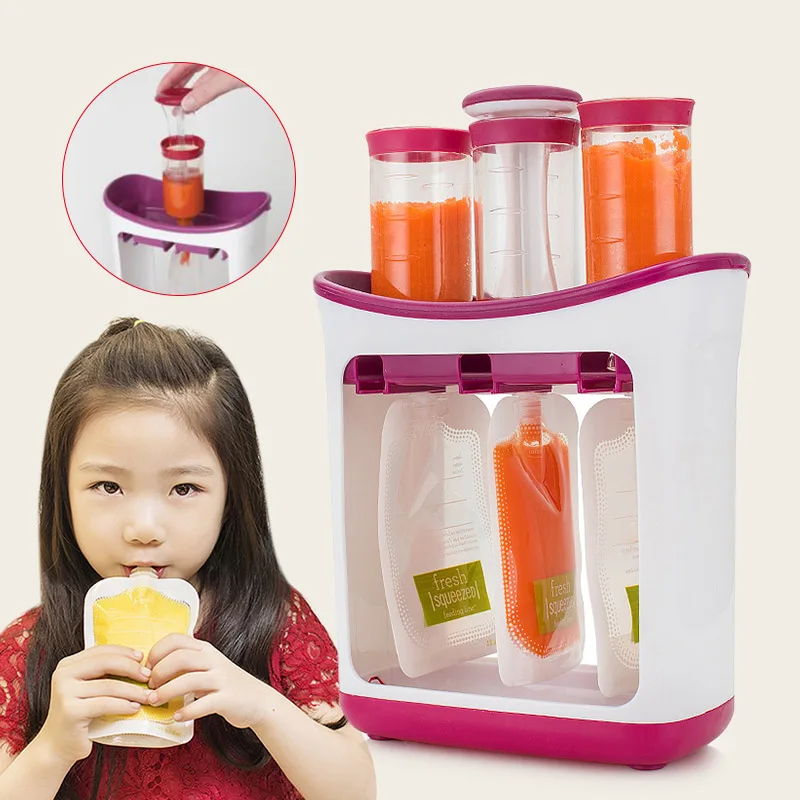 They are inferior to freshly squeezed juices and direct-pressed drinks in terms of the content of nutrients.
They are inferior to freshly squeezed juices and direct-pressed drinks in terms of the content of nutrients.
Information about what kind of juice you have in front of you can always be found on the packaging of the drink. The composition of the product is also indicated there. Pay attention to the content of sugar and other chemicals.
Nectars
These are drinks with natural juice (up to 50%). They also include water, sugar or sweeteners, fruit, berry or vegetable puree, preservatives. Most often, nectars are prepared from concentrates, which are then diluted with water.
In the vast majority of cases, nectar is inferior to natural juice in terms of the content of all biologically active substances. But there are vegetables and fruits from which it is impossible to squeeze ordinary juice: for example, bananas, papaya, passion fruit and others.
Fruit drinks
Morse is a drink made from frozen berries. According to production standards, it must contain at least 15% berry juice or puree.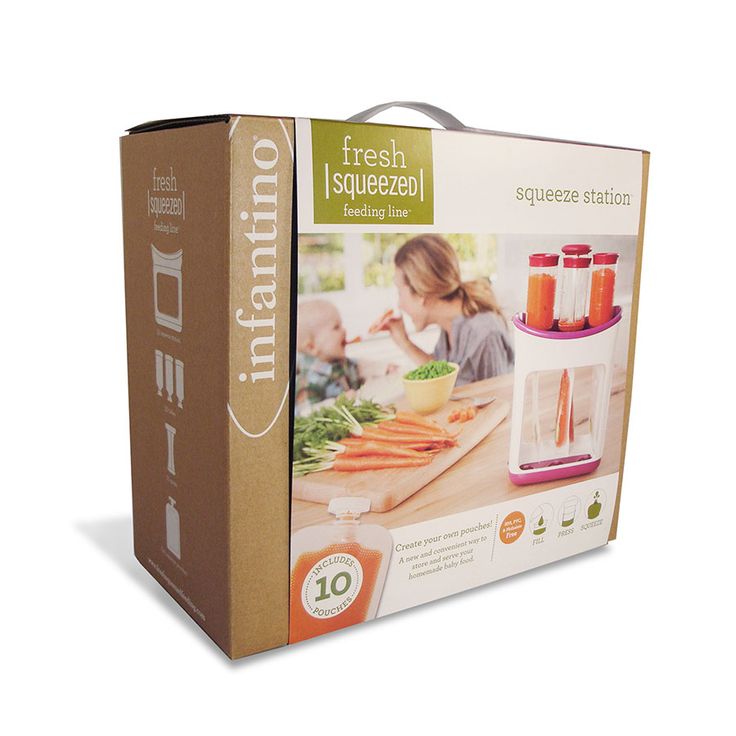 Morse can also be prepared at home: you need to chop the berries, add water and sugar to taste. Due to the low content of berry raw materials, fruit drink is inferior in useful properties to many juices. But it is superior to nectars, because freezing, unlike other methods of processing raw materials, retains most of the biologically active substances.
Morse can also be prepared at home: you need to chop the berries, add water and sugar to taste. Due to the low content of berry raw materials, fruit drink is inferior in useful properties to many juices. But it is superior to nectars, because freezing, unlike other methods of processing raw materials, retains most of the biologically active substances.
What are the benefits of different juices?
Each drink made from fresh fruits, vegetables or berries is rich in nutrients. We will consider only the most popular options.
Orange juice is rich in ascorbic acid, which increases immunity and strengthens blood vessels. In addition, the drink contains other vitamins: A, E, K, representatives of group B. All of them are necessary for our health.
The drink also contains a lot of minerals (copper, iron, phosphorus, zinc and others), dietary fiber, pectins.
Regular consumption of orange juice strengthens the body, helps to cope with acute and chronic stress, improves immunity, stimulates digestion, and accelerates the elimination of toxins.
This drink also has some contraindications. It is not recommended to use it with increased acidity of gastric juice, gastritis and diabetes.
Apple juice is an affordable fruit drink in our region. It is distinguished from other drinks by its high content of vitamins A, B and C, as well as iron, magnesium and phosphorus. In addition, apple juice contains biotin and pantothenic acid.
With the regular use of freshly squeezed juice, the immune status, memory and concentration of attention improve, the work of the cardiovascular system normalizes. Apple juice is recommended to be included in the diet for anemia, low acidity of gastric juice, frequent colds.
In addition, this drink is known to help recover from illnesses and improve digestion.
It is recommended to limit the use of apple juice for gastrointestinal pathologies, since the drink has an irritating effect on the mucous membrane.
Peach juice contains vitamins A, B, C, malic, tartaric and citric acids, pectins, dietary fiber.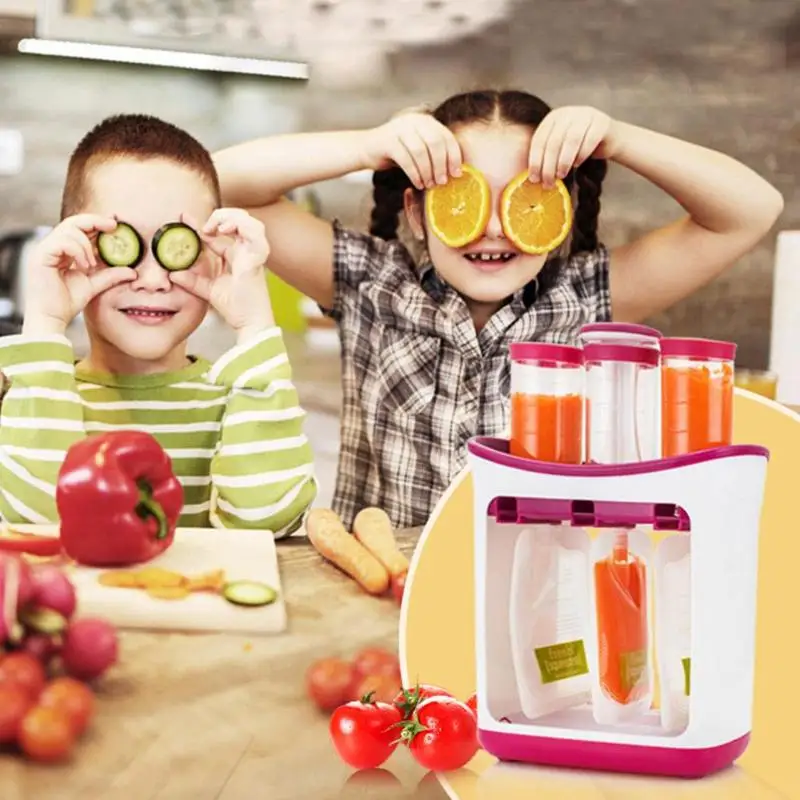 It is also rich in potassium and iron.
It is also rich in potassium and iron.
Peach juice enhances the secretory activity of the digestive tract, stimulates the functioning of the liver and biliary tract, and has an antiemetic effect. It is recommended to use it for various vascular diseases, anemia, heart rhythm disturbances, as well as frequent colds.
Peach juice is not recommended for acute and chronic diseases of the digestive system, a tendency to gain weight, diabetes.
Carrot juice is the leader in vitamin A content among all vegetable and fruit juices. Thanks to this, it improves eyesight, improves immunity, strengthens bones and teeth, and normalizes the functioning of the thyroid gland.
In addition, carrot juice contains other vitamins (B, C, D, E and K), minerals (magnesium, manganese, zinc, iron, phosphorus, copper and calcium), organic acids and fiber.
Regular consumption of the drink improves the functioning of the gastrointestinal tract and cardiovascular system, has a calming effect, and normalizes sleep.
Due to the high content of organic acids, freshly squeezed carrot juice is contraindicated in diseases of the digestive system. Also, due to the high content of carbohydrates, it is not recommended to drink it with diabetes.
Tomato is the only vegetable and fruit juice drink that contains lycopene. This substance from the harmful effects of free radicals. The drink also contains vitamins A, B, C and K, potassium, manganese, dietary fiber.
With regular use, tomato juice strengthens the musculoskeletal system, prevents the development of osteoporosis, strengthens the walls of blood vessels and the heart muscle, thins the blood, improves intestinal motility, reduces flatulence, stimulates the production of bile.
Tomato juice is not recommended for gastritis with high acidity, ulcers.
How and when to give juice to children?
Children can be given fruit and vegetable juices. It is best to use direct-pressed drinks, as well as berry fruit drinks or nectars with a high content of natural raw materials. It is better if the drinks do not contain sugar, salt, preservatives and dyes.
It is better if the drinks do not contain sugar, salt, preservatives and dyes.
As complementary foods, fruit and vegetable juices are introduced into the diet of a child at 7 months of life - if he is breastfed, and at 4 - if he is artificially fed. During this period, it is enough to give the baby 0.5-1 tsp. juice at every feeding.
After 1 year, a child can drink up to 120-150 ml of juice per day, but this amount is best divided into several doses. And children over six years old can drink 200 ml per day, also in divided doses.
Do not forget that juice is not a drink to quench your thirst, but a full snack. It can replace a second breakfast or afternoon snack. At the same time, it is better to give preference to fruit or berry drinks before lunch, and vegetable drinks after lunch.
Freshly squeezed juices should not be introduced into the diet of children under 12-14 years old, their digestive tract may not be able to cope with an aggressive drink. Therefore, the benefit from it will be much less than the harm.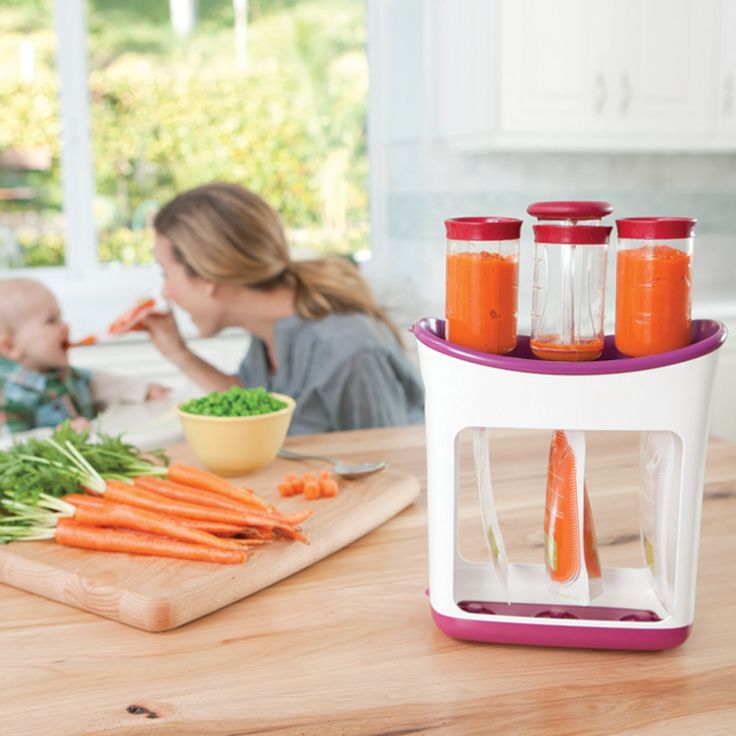
Don't stop at just one juice. In order for the child's body to get the maximum benefit, drinks should be alternated. Fruit and vegetable juices from several products are also suitable. For example, apple-peach or cucumber-tomato.
When you first introduce this or that juice to the children's menu, be sure to monitor the child's condition. Juices are strong allergens, so check your baby's skin for rashes, redness, and scratching. If these symptoms appear, try a different type of juice or fruit drink.
Also watch your digestive system. Accelerated peristalsis, increased gas formation, loose or frequent stools are signs that you have given your baby too much juice. Also, symptoms can occur if the body does not absorb the vegetable or fruit from which the juice is made. If the symptoms persist for several days, it is better to contact the pediatrician and review the baby's diet.
Food: why go into a jar? | 74.ru
Share
Should you feed your child industrial baby food or cook it yourself? When is it necessary to start accustoming a child to adult food and how to do it? These questions are of concern to many young mothers, not only when the time for the first feeding comes up, but also later, when the babies get older.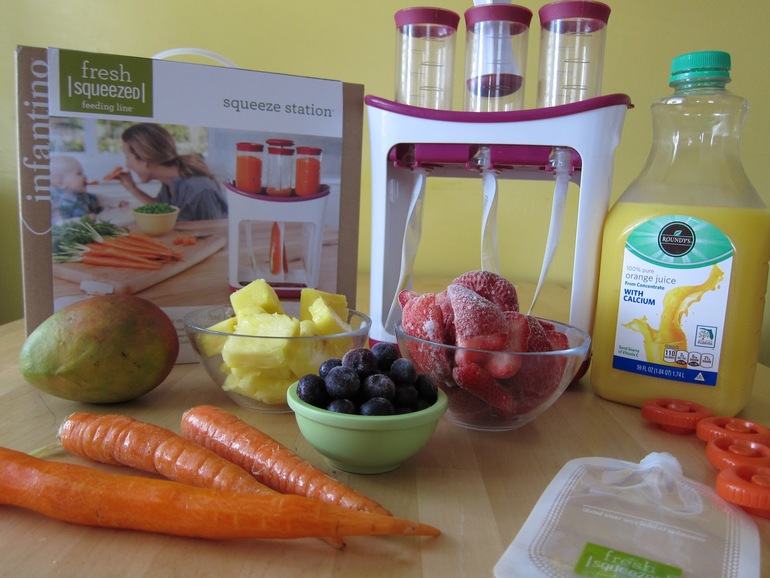 We will try to understand some of the nuances of choosing industrial baby food and cooking food for babies at home.
We will try to understand some of the nuances of choosing industrial baby food and cooking food for babies at home.
The first question mothers face when they need their first complementary foods is whether to buy cereals and purees in the store or cook them on their own. Of course, the main thing at the same time is the benefits of products for the baby. Manufacturers claim that commercially prepared, vitamin-enriched meals are better than home-cooked foods, and many pediatricians support them in this. But in the minds of most parents there is a stereotype: a jar is preservatives and a lot of different not very useful additives. Indeed, it is difficult to imagine how useful mashed potatoes can be, which is stored for two years, and even at a temperature of 25 degrees.
In fact, the long shelf life of baby food is ensured by sterilization and packaging features. With proper storage, they can be used without fear, but it’s often impossible to find out how and where the jars were stored before they hit the counter.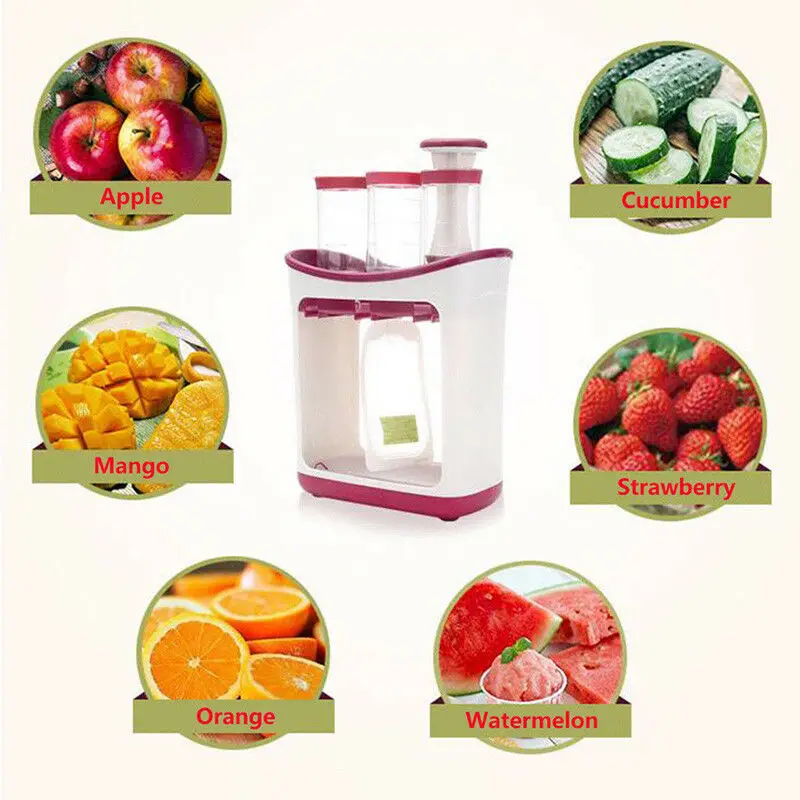 Moreover, some unscrupulous sellers interrupt expiration dates in order to sell expired goods - such mashed potatoes or porridge will definitely not bring any benefit to the baby. It remains to hope for the decency of the seller or cook it yourself, so as not to expose the baby to unnecessary risk.
Moreover, some unscrupulous sellers interrupt expiration dates in order to sell expired goods - such mashed potatoes or porridge will definitely not bring any benefit to the baby. It remains to hope for the decency of the seller or cook it yourself, so as not to expose the baby to unnecessary risk.
“Industrial nutrition for young children makes life very easy for the mother. Firstly, instant porridges, they only need to be diluted, and secondly, they are well homogenized and designed specifically for a small age. But from ten months, of course, it is advisable to include porridge in the traditional version in the child’s diet in order to teach the baby to chew food, stimulate chewing, ”explains Tatiana Tabak, head of the gastroenterology department of the Chelyabinsk children's hospital No. 9.
However, no one forbids mothers to cook porridge for a young baby on their own, especially since today there are so many helpers in the form of double boilers, blenders and other equipment in the home kitchen.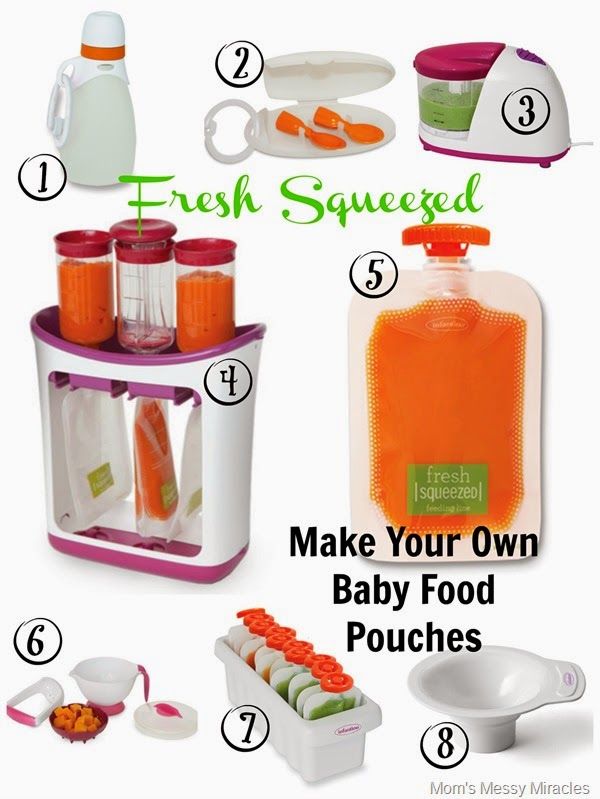 The main condition is to observe the dosages to obtain porridge of the required consistency and rinse the cereal before sending it to the pan. Up to a year, it is better to offer the baby low-allergenic cereals - rice, buckwheat, corn.
The main condition is to observe the dosages to obtain porridge of the required consistency and rinse the cereal before sending it to the pan. Up to a year, it is better to offer the baby low-allergenic cereals - rice, buckwheat, corn.
But vegetable and fruit purees are preferable to store-bought ones, especially in winter and early spring, doctors say. “By using commercially produced purees to feed children, we can give the child a wide range of vegetables and fruits, especially at a time of the year when their supply is very scarce. You can offer the baby and parsnips, and green beans, and green peas. The only thing is that you need to choose these jars correctly, - warns Tatyana Alekseevna. – Industrial purees are prepared with different degrees of grinding for each age. Homogenized purees are designed for the age of four months, at six months the baby can already be offered pureed puree, and from ten months - chopped with small pieces of vegetables and fruits. In jars, which are recommended from ten months, there are already good pieces, which again teach the child to chew.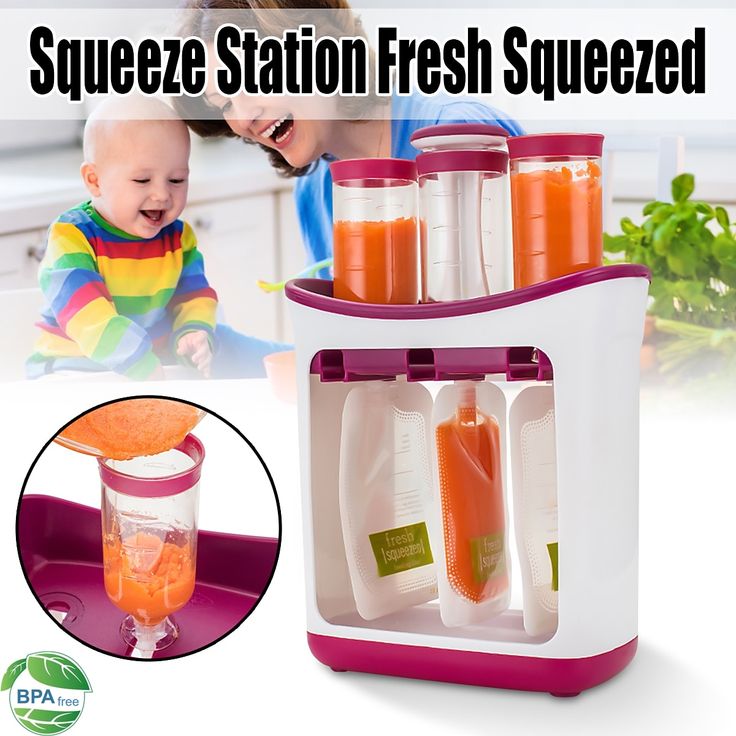 Unfortunately, a mother often takes a jar, looks at the composition of the products, and if it is indicated that it is recommended for children from five months, she buys it for her older child. It is not right. Children need to take food that is appropriate for their age.”
Unfortunately, a mother often takes a jar, looks at the composition of the products, and if it is indicated that it is recommended for children from five months, she buys it for her older child. It is not right. Children need to take food that is appropriate for their age.”
“When we started complementary foods, I was in favor of jars. I have seen enough advertisements, beautiful pictures in fashionable children's magazines, - says mother one and a half year old Ilyusha Anna . - For a couple of weeks, I honestly tried to cram canned cauliflower, pumpkin, potatoes into my child. Writhed, spat out. I had already decided that my son did not like vegetables. But then I decided to buy the same products, only natural ones. And you know, gobbles up both cheeks! I buy frozen cauliflower, broccoli, spinach, beans. I froze pumpkin, zucchini. There are always potatoes, carrots, and buying them in winter is not a problem. He eats this with pleasure.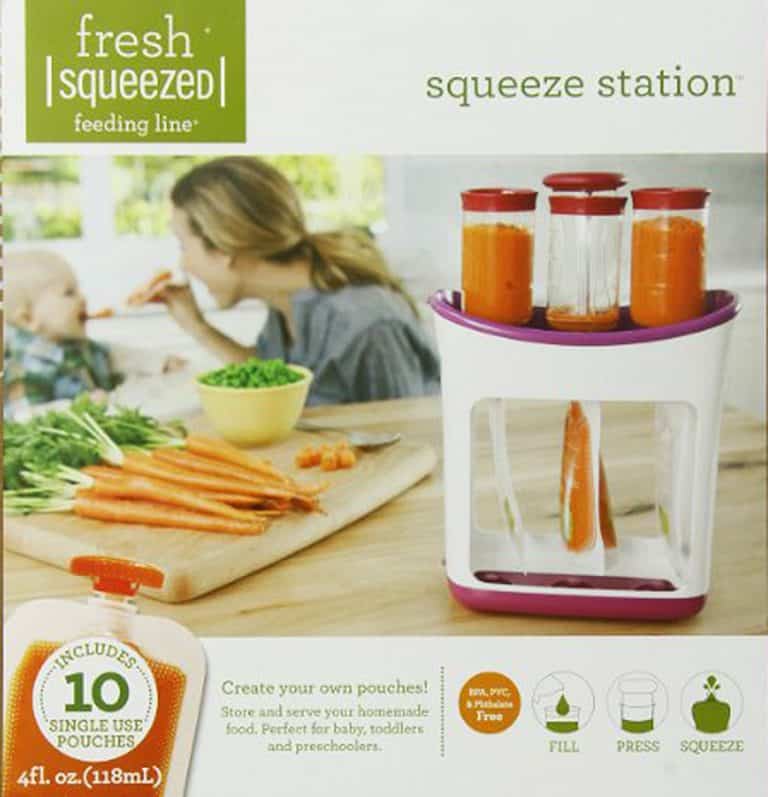 And diversifying the menu, having different ingredients, is very easy. For lunch, for example, zucchini, broccoli and spinach with meat, and for an afternoon snack, pumpkin and apple. I cook all the vegetables in a double boiler, it turns out delicious.
And diversifying the menu, having different ingredients, is very easy. For lunch, for example, zucchini, broccoli and spinach with meat, and for an afternoon snack, pumpkin and apple. I cook all the vegetables in a double boiler, it turns out delicious.
If you wish, it is really easy to prepare a vegetable dinner for your baby. To do this, you need to choose beautiful fruits without spots and cracks and rinse thoroughly under running water without soap. It is better to cook them for a couple, since when cooking, many useful substances pass into water, or bake. In this case, the loss of vitamins will be minimal. It is also possible to use frozen products: all useful substances are perfectly preserved in them. The finished vegetable must be chopped with a blender or rubbed through a sieve. You should not chop the vegetables that you give your child for the first time with a fork or a crush: the child’s body, most likely, will not be able to digest such mashed potatoes. Nothing is usually added to the first purees, especially sugar and salt, but in some cases it is possible to bring the puree to the desired consistency with breast milk or formula.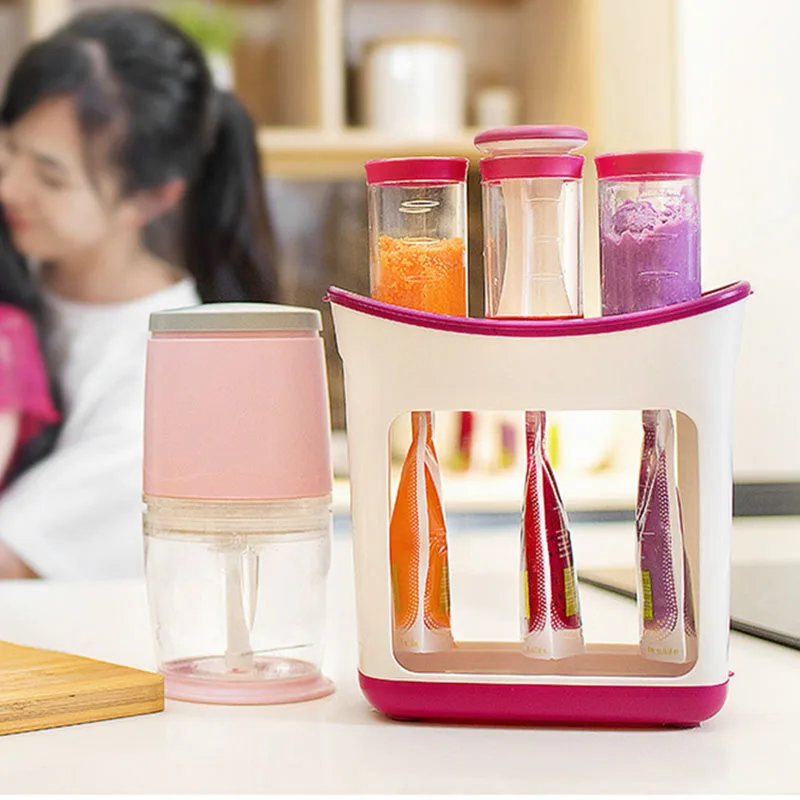 Later, you can add a little vegetable oil.
Later, you can add a little vegetable oil.
Babies up to a year old can be introduced into the diet of zucchini, broccoli, cauliflower, kohlrabi, green beans, pumpkin, potatoes, carrots. Closer to the year - corn and peas. It must also be remembered that mashed potatoes, beloved in our country, are a rather heavy dish, so it is advisable to mix potatoes with other vegetables. And one more thing: it is not recommended to warm up homemade purees, it is better for the baby to receive them freshly prepared.
As for fruits, acquaintance with them begins with apples and pears. They can be given fresh - first scraped, then cut into pieces, added to porridge. In the form of mashed potatoes and baked fruits, any kid will also like it. Compotes are very useful, but it is better to postpone acquaintance with freshly squeezed juice for up to a year and a half and give it only in a diluted form.
Another question that worries many parents is at what age should a child be transferred to regular food? “I'm already exhausted.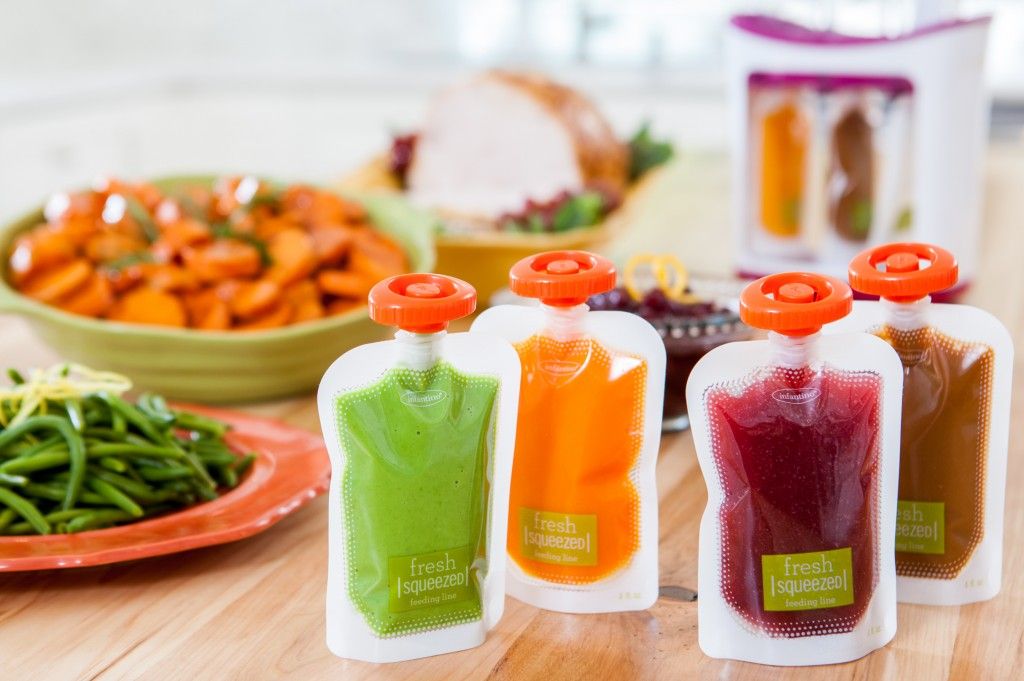 Everything I cook in the steamer goes into the bucket! One and a half years and a full mouth of teeth - and eats only canned food. I tried to give food in pieces, and crushed in a blender, and just from my plate - my mouth was locked and hysterical. How much longer can you hold on the banks? - asks young mother Olga Li .
Everything I cook in the steamer goes into the bucket! One and a half years and a full mouth of teeth - and eats only canned food. I tried to give food in pieces, and crushed in a blender, and just from my plate - my mouth was locked and hysterical. How much longer can you hold on the banks? - asks young mother Olga Li .
“Introduce ordinary food, but well pureed, preferably from a year old. Up to two years, only chopped food is recommended, Tatyana Tabak advises. - You can’t give a child meat in pieces - he simply won’t chew it. For this age, minced meat is used with three passes through a fine grate of a meat grinder. Soups are only pureed. From two years old, you can already have soups with small vegetables, salads from raw vegetables, beef tongue, cut into small strips. And acquaintance with minced meat and goulash is better to postpone until three years. Until the same age, it is not advisable for children to give fresh pastries, it is better to replace them with dry cookies, and up to a year - with children's cookies.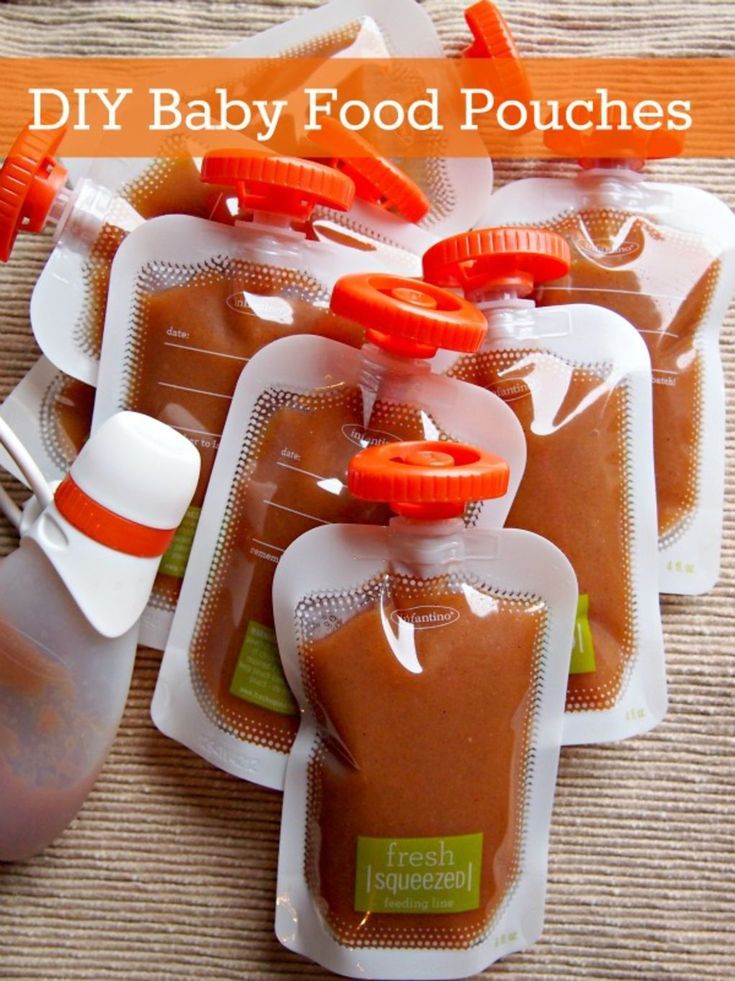
As for milk and dairy products, which are so necessary for a baby, up to three years of age, doctors recommend using milk mixtures rather than whole milk, at least for city dwellers. For children under six months, the first formula is produced, with a low protein content, safe for the kidneys and liver of a small child, in the second and third formulas its content is higher. Why is it undesirable to use whole milk? In the milk in the package, we only know the content of fats, proteins and carbohydrates, and what other vitamins are in it, what the cow ate, where she lived - it is not clear, therefore there is a risk. Children's milk is filtered by proteins, fats, carbohydrates, 15 vitamins and several microelements are also introduced there - this is fortified milk, which is more useful only fresh milk. However, the townspeople do not have the opportunity to drink it, only pasteurized is available here, in which there are practically no vitamins left.
Cooking or buying canned food? Should I give my baby formula or whole milk? Transfer a child to an adult table from a year or from two years? Definitive answers to these questions will never be found.